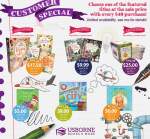Hi! Welcome to my blog. My name is Olisia. I am a mother who is uniquely attuned to the learning needs and desires of kids, all the while, committed to connection, satisfaction, and discovery. I find joy in combining my passion for research – uncovering new ideas and techniques for teaching – while simultaneously being receptive to the individual learning needs and desires of children, so they feel confident sharing their life gifts with the world. Thank you for stopping by! Feel free to send me an email or post a comment to get in touch, I would be happy to hear from you.

My daughter eating a Thimbleberry
Thimbleberry Home
The name of my website Thimbleberryhome came from the memory of myself eating thimleberries as a child. It represents finding sweetness and nourishment where I am, on the land around me – gifts given by the earth.
Had I not grown up with wild berries, creeks, frogs, and long days concocting magic potions, I may not feel the same pull to return to that place. Had I not walked barefoot on the beach in the moonlight, felt my body glide across the shallow water on a skimboard, paddled upriver in a kayak, or skinny-dipped in a river on a long summer’s day, I might not have sensations in my body that call me back to those things. I dream from where I have been.
I dream from the woods, rivers, and beaches of Northern California where I grew up. And I dream from the forests, fields, and mountains around Portland, OR where I live now with my family.
Even the more distant places that I have traveled to have become a part of me. I dream from the stairs of a Mayan Pyramid. I dream from the windy beaches of Hawaii. I dream from a hillside view in Hungary. I dream from the jungle of Costa Rica.
It is from this desire to be present with nature and to see the world that I raise my kids. I have chosen homeschooling for the freedom it allows us to be and to explore. To create deep and meaningful connections is what propels my vision of education for my children.


Thriving in Place
One of the most inspiring and life-affirming pieces of writing I have ever read is from the late speaker and Indigenous visionary leader John Mohawk. The work is titled “The Art of Thriving in Place” from the book Original Instructions: Indigenous Teachings for a Sustainable Future, edited by Melissa K. Nelson (2008).
When I begin to stress out about our income, I remind myself of why I have not sent my children to day-care in exchange for a paid job. Staying home with my twins has allowed me to take the time to analyze and re-create our standard, low-nutrient diet into a nutrient dense and lively one; to connect with our region through local produce from a CSA supplier, learn how to grow our own food at a community garden, and to experiment with new recipes regularly. I can peruse blogs and books, home-study myself in nutrition and perspectives on diet (Paleo, Macrobiotic, Raw, etc), and learn what we like to eat as a family (those darn picky kids are intelligent guides to eating well and taking the process slow). To be present with where I am right now in my life and my reasons for being so, while putting other dreams on hold (the house and career), is what it means to me to “thrive in place”. As I embrace this moment rather than resist or complain about it I empower myself to live deeply and creatively with all I have access to.
“The Art of Thriving in Place” is a technique for learning how to live in a manner that is more sustainable and fulfilling than current dominant patterns of industrial food production. Not only does Mohawk speak of the necessity to question how our diet will effect future generations (regenerative or abusive land use), he guides us to contemplate how we will feed ourselves from what we know about the plants that grow around us in order to thrive as global climates shift (as they have done before). He illustrates, “Humans will survive the next climate change. Trust me. Humans will survive anything. Corporations won’t necessarily survive it though; Monsanto won’t survive it. But right now Monsanto produces almost all of our food seed products and that’s the problem. We need to move away from that.” (p. 136). Forming a relationship with the plants that grow locally is a powerful tool for being able to sustain oneself. As I work in the garden, the kitchen and hike with the kids, I raise my children with the understanding of wholesome food, where it comes from, and how to live in healthy partnership with it.


Nice piece babe!💖
LikeLike
Surprised and pleased to have found this blog written by the daughter of a dear friend.
LikeLiked by 1 person
Hi! So happy that you came across it. 😊
LikeLike